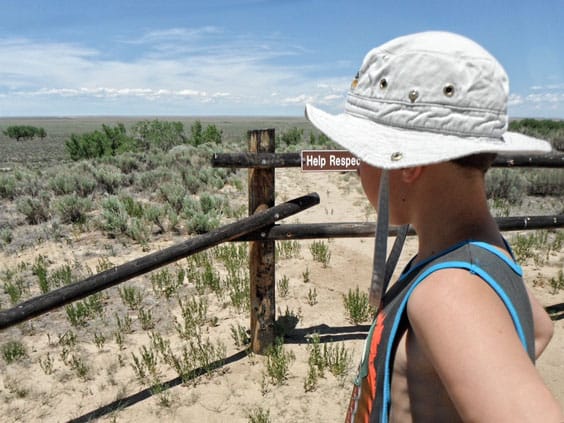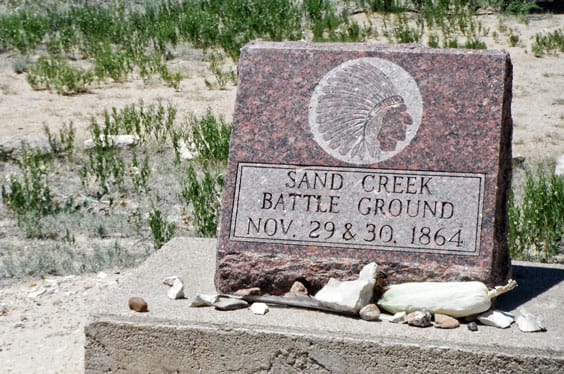Sand Creek National Historic Site
Lost but not forgotten
Article and photos by Liz Jurkowski

Looking at the landscape, it is difficult to see evidence of the horrific Sand Creek Massacre. Although not an upbeat location, kids, too, can gain an understanding of the event.
I had always known that the Sand Creek Massacre was a devastating
part of Colorado’s history, but did not fully understand the events that
occurred on November 29, 1864 until I took the time to visit, learn and
reflect at the Sand Creek National Historic Site in Kiowa County.
The Colorado Territory, in the midst of the Civil War, found itself
in a tough situation. A treaty signed at Fort Laramie in 1851
guaranteed the Arapaho and Cheyenne Indian tribes 44 million acres from the North Platte River to the Arkansas River, so long as they allowed
for the building of roads and free travel by non-natives through the
land.
However, with the Colorado Gold Rush of 1859, eager settlers soon
pushed into the native lands. The Fort Wise treaty of 1861 drastically
decreased the tribal lands to less than four million acres. This
reduction of native hunting and living lands, along with the influx of
settlers, created the inevitable conflict for land, resources, and
ultimately survival.
The Sand Creek National Historic Site was created in 2007 after an
exhaustive study to determine the exact location of the 1864 attack.
Along the dry creek bed of Sand Creek, at dawn on a late fall day,
nearly 800 volunteer troops from the Colorado 1st and 3rd Regiments
attacked the peaceful encampment of more than 600 peaceful Cheyenne and Arapaho natives.
Under the leadership of Colonel Chivington, more than two hundred
(mainly women, children, and elderly) natives were killed by small arms
fire and howitzer attack. Many escaped the initial surprise attack and
fled up and into the creek bed, some digging sand pits to hide in as the
soldiers chased and shot. At the end of an eight hour onslaught, more
than two hundred natives and 18 soldiers were killed. Even after the
battle, terrible atrocities occurred on the battlefield, permanently
placing a scar on Chivington’s decisions and orders.
To their moral credit, nearly one hundred U.S. volunteers did disobey
the orders to attack the mainly unarmed natives due to moral resistance.
While the memorial and site are sparse, and the battlefield and creek
bed hardly show the destruction and broken promises the massacre
brought about, the Sand Creek National Historic Site is a valuable
destination for all.
As the National Park Service website about the site states, it “. .
. was established in 2007 to preserve and protect the cultural landscape
of the massacre, enhance public understanding, and minimize similar
incidents in the future.” It is not a happy place to visit, but I left
there with a better understanding of a mistake in our state’s past, and
an optimism that today’s Coloradans are more open-minded and aware.

The memorial stone at Sand Creek Massacre National Historic Site marks a scar in Colorado’s history.